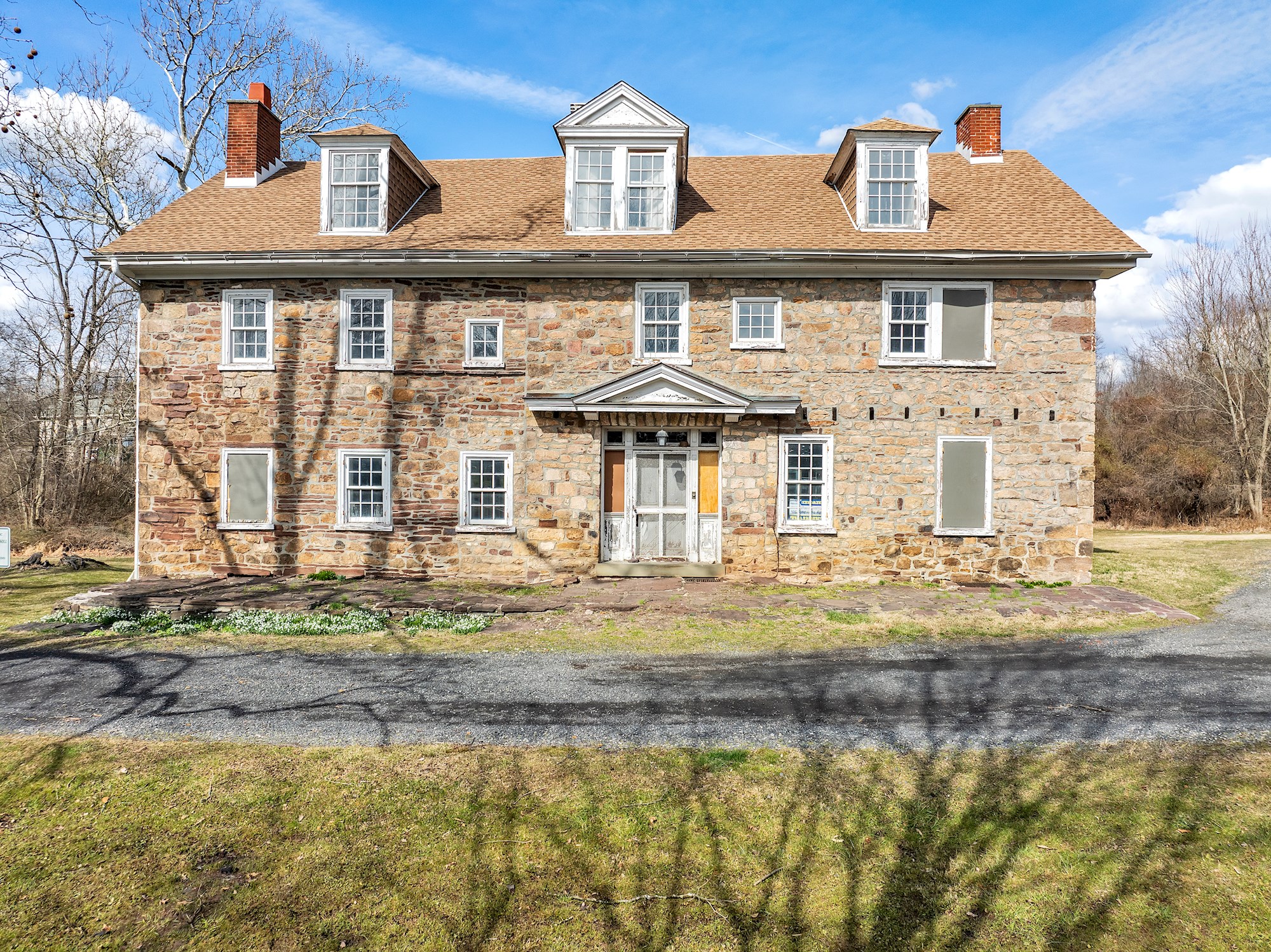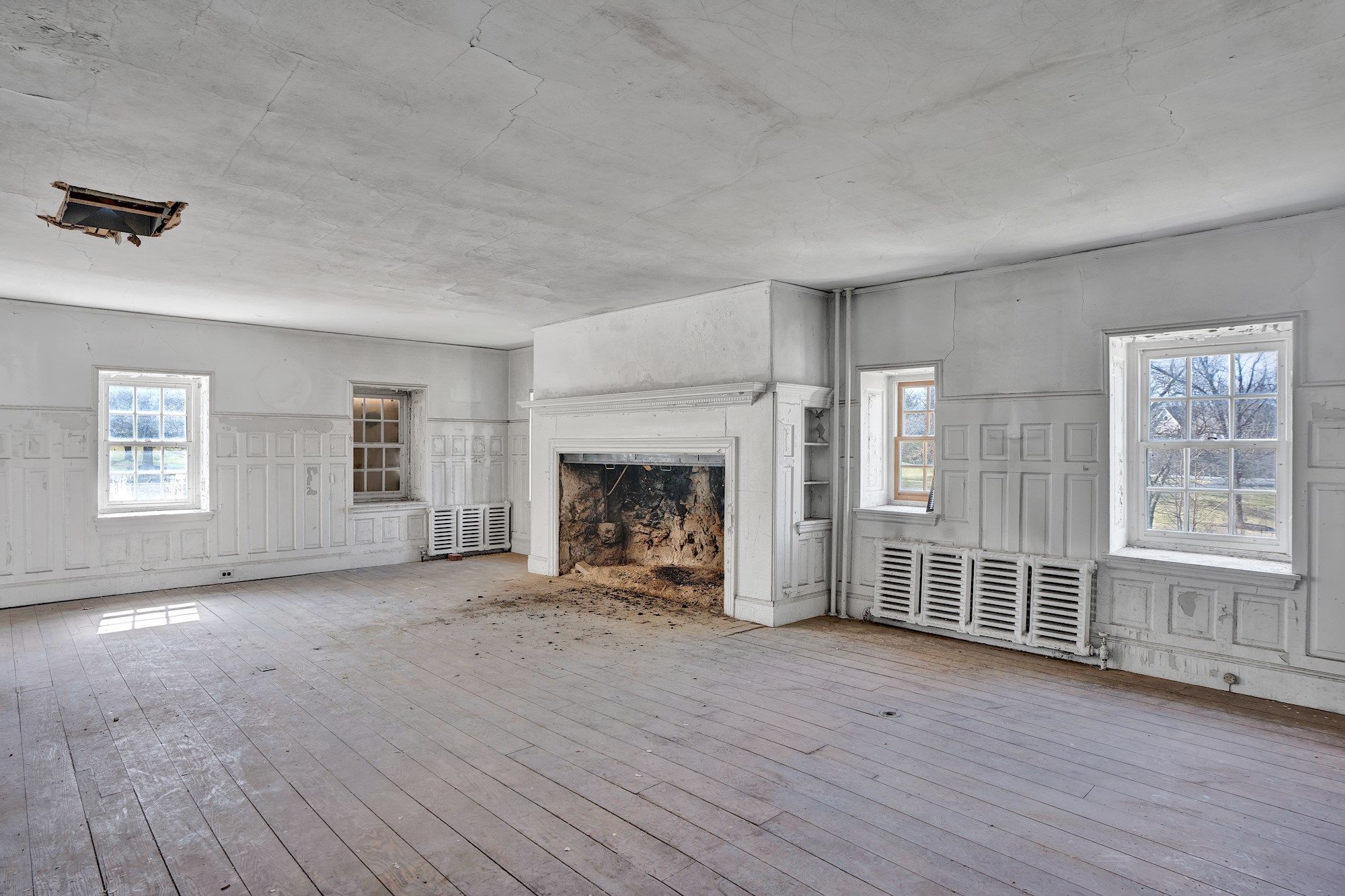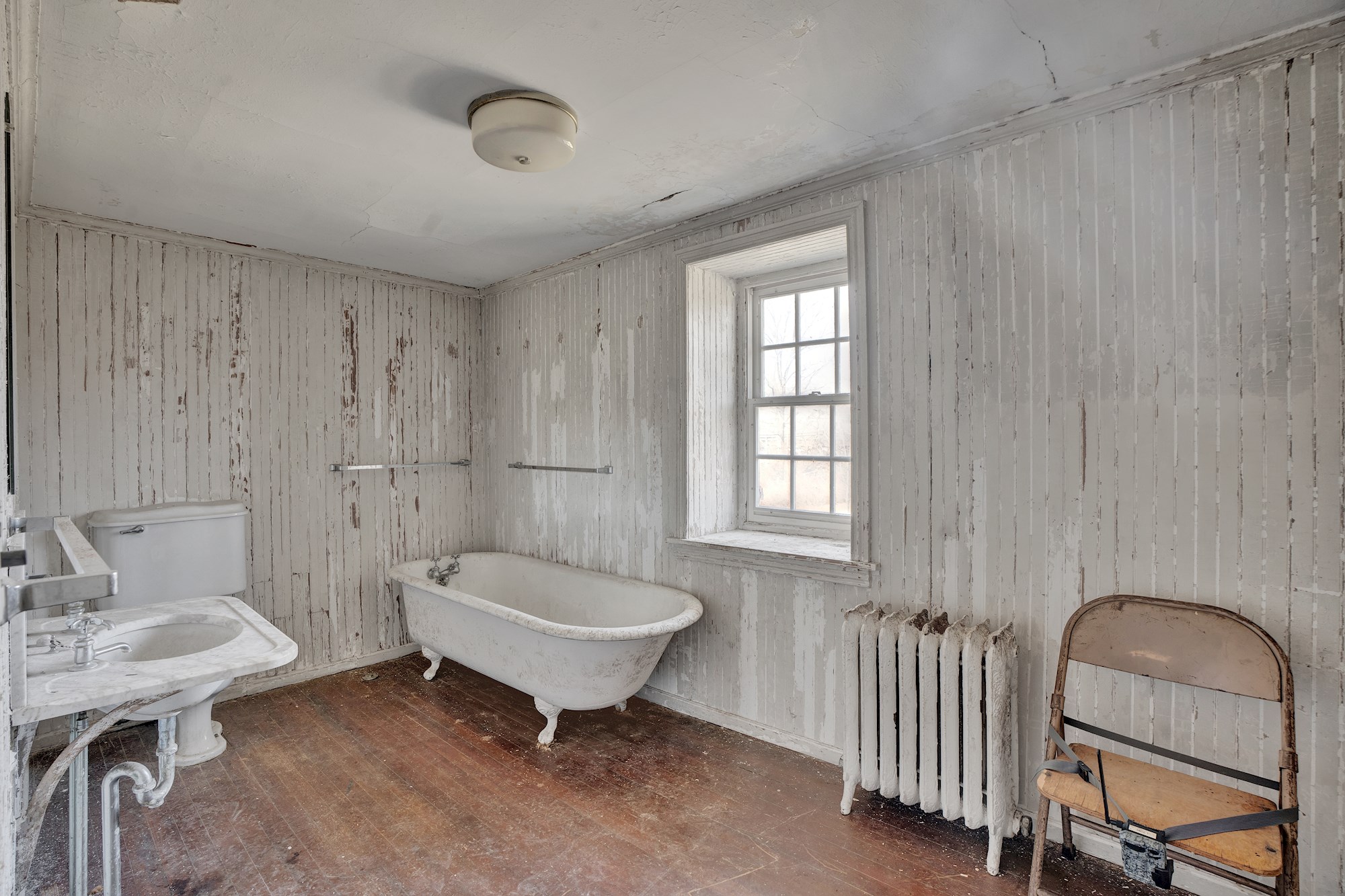The Ingersoll House and Barn were originally purchased by the Township when the Spring House Farms neighborhood was developed. While the Township has maintained the basic structure and grounds of the property since then, no one could come up with a purpose for the house that was respectful of neighbors and suitable for grant funding. The Board of Supervisors ultimately decided that the best chance for a full restoration of the property was to sell it to a private party.
Before selling the property, the Board approved a deed restriction that permanently tied the property to the Township's Historic Resource Protection Standards. These Standards provide guidance to facilitate the appropriate restoration of the Township's historic properties, and to prevent unnecessary demolition.
On July 29, 2024, the Board approved the sale of the property at a public auction. The results may be found on the HK Keller website. The new homeowners intend to restore the property, and their work must comply with the Historic Resource Protection Standards. The Board is excited to watch the progress of this next stage of the Ingersoll House and Barn.
A brief history of the Ingersoll property written by Joe Langella of the Lower Gwynedd Township Historical Advisory Committee, along with pictures of the house and barn, may be found below.
Spring House Farm/The Ingersoll Estate—a History Worth Preserving
Joe Langella, Lower Gwynedd Township Historical Advisory Committee
Known by more than one name, Spring House Farm/The Ingersoll Estate on Old Bethlehem Pike (behind the LGT Municipal Building) is one of the oldest standing structures in the township. Believed to be built in the early 1700’s atop an ancient spring that still flows to this day, it is also believed to be the inspiration for the naming of the village upon which it stands—Spring House (1). In fact, when the Ingersoll family acquired the estate, it was called Spring House Farm.
Spring House Farm sits alongside Willow Run Creek, which flows into Wissahickon Creek and is partly fed by its underground spring.
Before the arrival of European settlers to the area, the Spring House area was a village site inhabited by members of the Lenni-Lenape tribe—as well as a stopping point for Native Americans coming from the Hudson River Valley to trade with the tribes of the Delaware Valley. The natural springs in the area were likely a reason for settlement here. This trade route was called the Minsi Trail. The Minsi Trail cut south from New York through the Pocono Mountains and ran through another Lenni-Lenape village called Pokasie—which is now modern-day Perkasie in Bucks County. From Perkasie, the trail made its way to Spring House. It was from Spring House that another trail, the Maxatawney, branched off to the west. This trail then became what the European settlers called “The Great Road.” Today we know it as Sumneytown Pike.
Further research gleaned from Historical Collections Relating to Gwynedd (Howard M. Jenkins, 1884) reveals a reference to a "stone spring house" as the starting point of a “new road” built in 1760 leading from said spring house to Boehm's Church in Blue Bell. That road is today called Penllyn-Blue Bell Pike. Jenkins states in a footnote to the reference, "here doubtless, is the origin of the name of the present village the Spring House" (2). Knowing that the house was standing before the road was built, places the date of the house’s construction before 1760. Its adjacent barn and stables have an inscription and date that reads: E. C. 1787.
The E. C. stands for Ezekiel Cleaver. Ezekiel was a descendant of the Quaker Peter Klever, a German immigrant from the Rhine Valley and one of the first of the settlers of Germantown in Philadelphia (3). The Cleaver family owned the house and property for 125 years. At some point after this period, the house was owned by Philadelphia financier Francis Bond. Francis Bond’s sister was Adelaide Josephine Bond and she married Stephen Warren Ingersoll. The Bonds lived at Spring House Farm until 1907 when they moved to a new home in Gwynedd Valley (that home, which they named Willow Brook, is now Assumption Hall at Gwynedd Mercy University). Francis Bond’s son James, the famed ornithologist and namesake of Ian Flemings fictional spy, lived at Spring House Farm in his youth (4).
According to the memoir of R. Sturgis Ingersoll, the Bond’s gave Spring House Farm to their nephew Edward Ingersoll and his wife, Emily Vaux Ingersoll. This is how The Ingersoll Estate came to be called The Ingersoll Estate! Sadly, tragedy struck the Ingersolls, when in 1918, upon returning home from World War I, Edward contracted the Spanish Flu and died at Spring House Farm. The house passed on to Edward and Emily’s son Warren Ingersoll and his wife Betty. They were the last Ingersolls to live there. They died in 1995 and 1997, respectively.
Warren and the Ingersoll’s that came before him were descendants of Jared Ingersoll, an American Founding Father, member of the Continental Congress and signer of the United States Constitution.
Spring House Farm (including its house, barn, and stables), with its close connection to the Lenni-Lenape, the village of Spring House, and the prominent Bond and Ingersoll families of Lower Gwynedd Township justifies its preservation for future generations of township residents.
References: footnotes 1,2,3 from Historical Collections Relating to Gwynedd by Howard Jenkins, 1884; footnote 4 from Fair Land, Gwynedd by Philip Johnson Ruth, 1991

























































